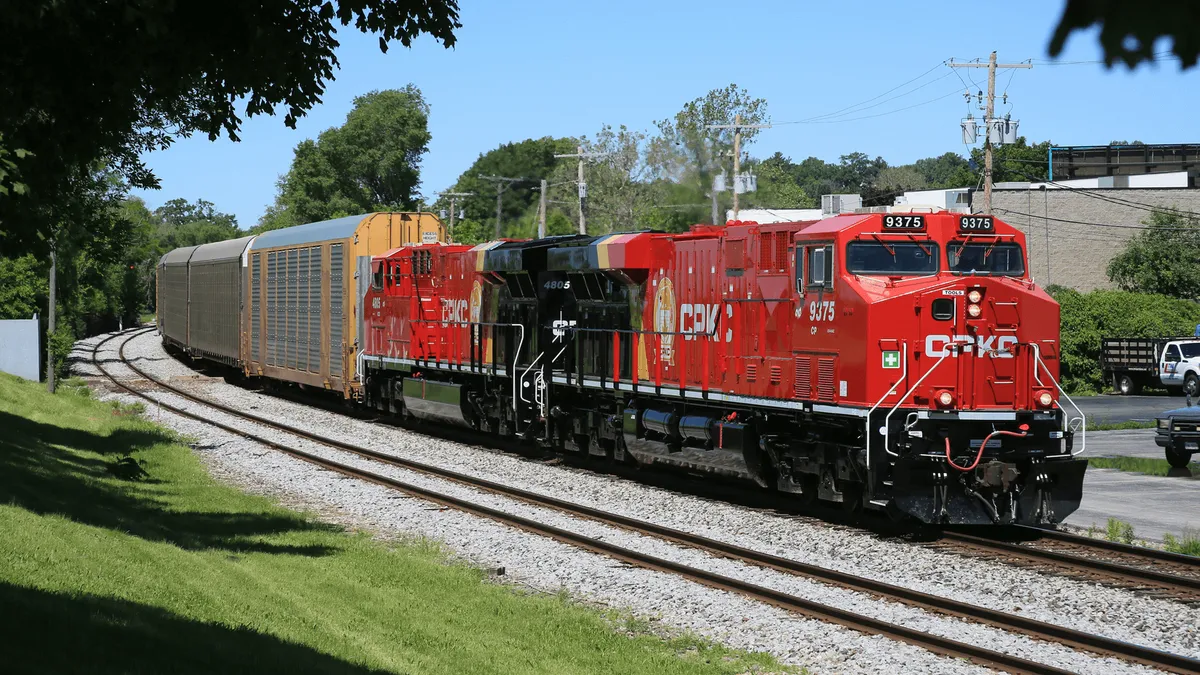Cross-border shipping rates will increase for many U.S. shippers on July 1 as countries begin to self-declare postal rates based on the deal reached by the Universal Postal Union (UPU) in September.
Consolidators, postage sellers and other cross-border service providers, including Asendia USA, DHL eCommerce, EasyPost, FedEx Cross Border, Passport Shipping, Pitney Bowes, Shippo, Stamps.com, UPS Mail Innovations among others, received new contracts from USPS in late May. But many have yet to alert shippers of the change, Kate Muth, executive director of the International Mailers Advisory Group (IMAG), told Supply Chain Dive.
Without explicit communication from service providers, shippers may be confused as to when and whether their rates will go up. "Anyone who is a bulk shipper, your rates are going up," Muth said.
Some IMAG members have been waiting for a letter from the USPS explaining the reasoning behind the rate changes, according to Muth. The timeline for self-declaring rates is counter to the usual January USPS contract renewals, so contract rates will not correspond to a publicly visible retail rate increase at the post office.
"They really need this letter to show here’s why we’re doing this — especially when we’re in the middle of a pandemic, the economy is so bad and service has been challenging to say the least because of the loss of airlift," Muth said.
The July 1 implementation date was mandated in the approved UPU deal. The U.S. submitted its self-declared rates as directed before March 1 and the UPU made them available to members on March 30. The U.S. Postal Regulatory Commission published the rates on April 6. But these rates are only part of the story for cross-border shippers.
Cross-border postage rates represent the combination of three services:
- The domestic service by the postal carriers in the country of origin.
- The foreign postal service that takes over the parcel or mail after it crosses the border into the destination country.
- Handling costs of the service provider.
The increase shippers will see therefore is a highly variable, but IMAG members have estimated the USPS inbound rate from China will increase 100% or more from the existing rate. Shipping cost from the U.S. to Canada is going up around 50%, more for light items due to the way Canada structured its rates.
The main concern that led the U.S. to threaten withdrawal from the UPU in October 2018 was classification of China with other developing nations — making it cheaper to ship a parcel weighing under 4.4 pounds from a retailer in China than to ship the same item domestically in many cases.
"It does appear that the way the U.S. has structured its rates will take care of the market distortion. We seem to have set the rate in the spirit of how the resolution was passed," Muth said, referring to the 70% of domestic rate cap on this initial set of self-declared rates.
At the same time the U.S. submitted its rates, 31 countries set reciprocal rates, meaning they were able to set rates for U.S.-based shipments only and will have the opportunity to self-declare for the rest of UPU membership at a later date.
The reciprocal rates, according to Muth, portend a more scattered, less standardized global cross-border postage structure — with some countries leaning entirely on the weight of the parcel or mailer to determine price, while others are using a per piece standard.
Carriers usually attempt to give 30 days notice to shippers when a rate change is imminent, Muth said. In addition to shippers scrambling to understand the new cost structure of international commerce, service providers changing rates need to update software and pricing algorithms. Since many shipping providers received their new USPS contracts on or after May 29, according to Muth, the timeline for this change has been compressed.
IMAG has been concerned about shipper perception of the change at least since late May when Muth sent a letter to the Chief Customer and Marketing Officer and EVP for USPS Jakki Strako requesting a letter of explanation of the price increases for shippers. A USPS spokesperson told Supply Chain Dive USPS responded to IMAG on June 5, but did not comment on whether or not it would provide the requested letter.
The pandemic has eroded cross-border e-commerce volume and reliability of postal and customs service worldwide. "In what world would you ever raise prices right now?" Muth said.
As of Tuesday morning, Muth said IMAG was still hopeful USPS would offer a "Dear Customer" letter for service providers to share with shippers.
Alex Yancher, CEO of Passport, an international carrier, told Supply Chain Dive he is passing on the rate increase to his customers in some cases and turning to USPS alternatives in others. The CEO felt he couldn't wait for the USPS with the clock ticking. "I do not know for certain the letter is coming so can’t wait for it to communicate with customers," Yancher said.
Stamps.com negotiated its own deals with international carriers and built out its GlobalPost network in 2019 to be ready for price increases like the ones coming July 1. As a result, most Stamps.com shippers will not see a price increase next month, Vice President of Online Marketing Eric Nash told Supply Chain Dive via email.
"Stamps.com just received the new international rates and are still analyzing the changes. However, we will be reaching out to all potentially impacted customers sometime this week to go over alternative options to maintain current pricing levels," Nash said.
As cross-border service providers wait for word from USPS, another rate change is on the horizon in January when more countries will be able to self-declare reciprocal rates with the U.S. and the USPS adjusts its prices as usual.
This story was updated with comment from Stamps.com.






















